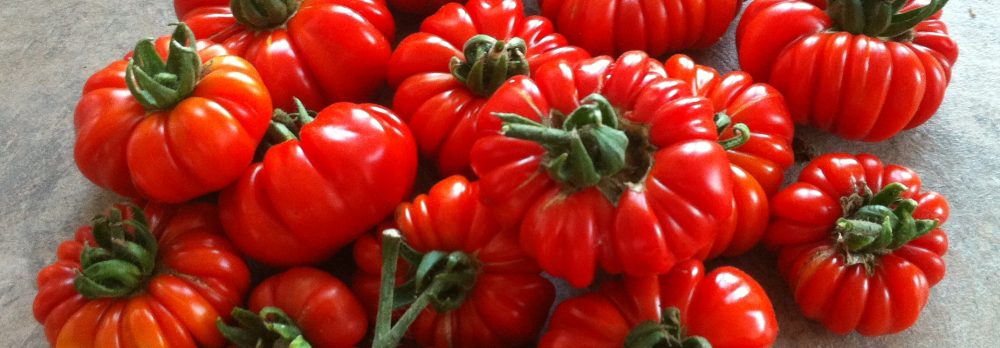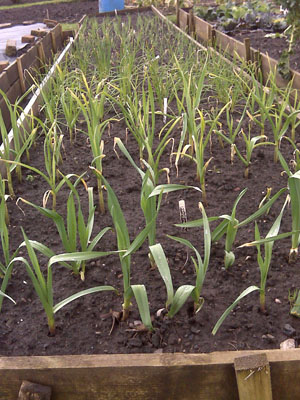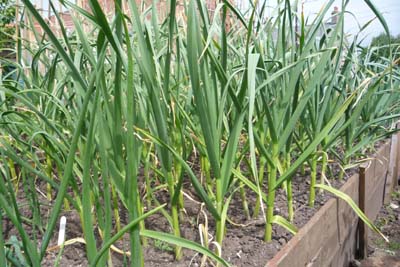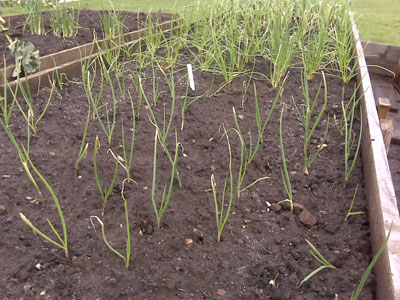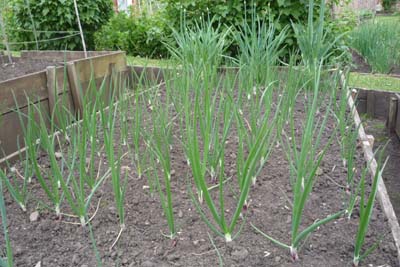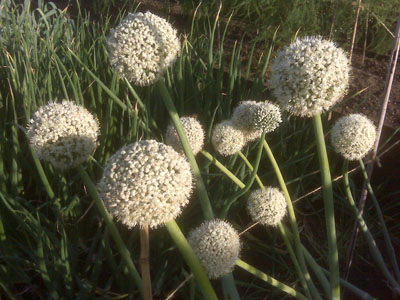This group of vegetables are known as Alliums. They are all very easy and rewarding to grow
Shallots and most garlic require a period of cold in order to grow well and give a good yield. Therefore, they should be planted early in the winter. Garlic and shallots can be bought in the autumn from garden centres and most seed companies. Specialist seed suppliers such as Simpsons, Marshalls and Suffolk herbs have a number of varieties worth trying. And don’t forget Garden Organic’s own catalogue. I like to keep back three or four large garlic bulbs of each variety and half a kilo of fat shallots which I plant out at the end of October. Shop bought garlic never gives as good a crop as certified bulbs from a reputable supplier. if your home saved bulbs are not perfect then buy fresh each year. If the crop fails for whatever reason; it might be slugs, or botrytis, (fungal mould), or the cloves simply rot in the ground, you can still get a useful crop re-planting as late as early March, but do try and give the bulbs a few weeks of chilling, either in an out house or the bottom of the fridge.
I also like to plant winter onion sets in late October as they give me a nice harvest of tasty onions in June and July before my main crop is ready to be harvested. I only plant red onions because they are as easy to grow as white ones but cost a lot more for some strange reason if you have to buy them.
I like to plant a few red onion sets like Red Baron n late March. I also like to grow onions from seed, starting them off in a propagator in my greenhouse in mid February, hardening them off in late March and transplanting them in blocks in early April, spacing the plants about 15cms apart.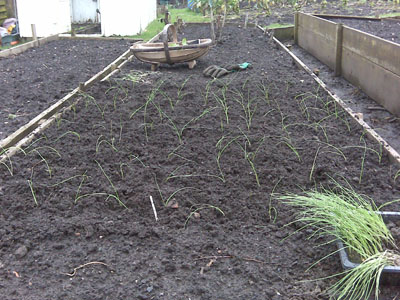
Garlic, shallots and onions will store very well if kept cool and dry and have been allowed to ripen properly when harvested. I eat shallots right through until the end of April. My late garlic like Lautrec stays edible until April too. Onions don’t keep quite as long I find.
These two pictures show you just how quickly onion seedlings get going. From transplanting in late April to just a month later, these Italian red onions, Rossa di Firenze, should provide a good crop for storing through the winter.
By early August many onions and all the shallots should have been lifted and dried, but some varieties of onion mature quite late. This raised bed has a variety of onion called Up to Date flowering for seed, a late season red Italian onion from Franchi called Rossa Di Fiirenze just starting to ripen and my leek crop growing on well with the damp weather.
I am hoping to save onion seed for the first time in 2010. I was given a few seed of an old English variety called Up To Date by The Heritage Seed Library and grew about twenty onions to eat in 2009. By late March this year I had kept back three very good specimens, which would have kept easily until the end of April. I planted them just below the surface in late March and this is how the looked by early June.
The bees and hover-flies have been pollinating the flowers since late June. Now, as the summer comes to an end the heads are starting to ripen.
By the end of July autumn sown onions should be ready for lifting. Allow the tops to fall over on their own. The gently lift the bulbs and lay them on their sides with the haulm out straight, bottoms facing the sun.
